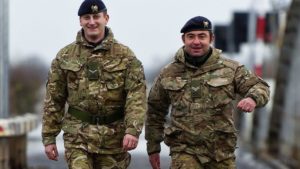Supporting critically ill children with seamless communication
EMBRACE, a mobile intensive care unit for children, operates at an incredible speed and needs a system with clear communication and reliable messaging.
By Pando Admin

Treating severely unwell children has to be fast-paced. It requires treatment and decision-making at the very limit of one’s skills and expertise. EMBRACE, a mobile intensive care unit for children, operates at an incredible speed and needs a system with clear communication and reliable messaging.
We spoke with Rose Kent and Helen Doyle, two nurse practitioners at EMBRACE. This case study was conducted in 2019.
Can you tell us about your work with EMBRACE?
It’s a great team and we love the work we’re doing. Having been here since the beginning, I’ve seen it change over the years. Our footprint has grown significantly as clinicians hear about the service we offer. It’s always been a place embracing innovation. For example, we introduced a call conferencing system so that a referring clinician can speak to a consultant; involving the tertiary centre immediately and allowing multiple parties to collaborate.
What sort of issues do you face that you hope Pando can solve?
One of the major issues nationally is around photo sharing. The size of PACS files makes it cumbersome to transport from one centre to another; then there’s the question of access. You typically need to be on site, and getting images to a specialist offering remote input, or who is mobile, is hard. To try and work around it we’ve tried sending images via encrypted CDs, but the issue is the encryption keys are different at different hospitals!
How has Pando helped?
Being able to share images and get an immediate conversation with another clinician has been great – from Barnsley to Bradford – all over Yorkshire! Sharing an image of a chest X-Ray and confirming the diagnosis or that nothing’s missed has been useful.
Can you share any specific examples?
One that springs to mind is a child with surgical pathology. We were able to involve a surgeon and an intensivist for advice and come up with a management plan, all via Pando. Ultimately an intubation was avoided and the child was transferred to definitive care much sooner than if we’d intubated at the time. Another way we’ve found it useful has been for cerebral monitoring in neonates – again as simple as getting the images to where they need to be, quickly.
The Impact
“Pando is a great tool for supporting critical care transport teams and improving patient care. We are excited by the prospect of further developments in the technology to help us in our work transferring critically ill newborn babies and children across the UK.”
Dr Stephen Hancock, lead consultant for EMBRACE service (paediatrics).
Your data will be stored as per our Privacy policy.
This site is protected by reCAPTCHA and the Google Privacy Policy and Terms of Service apply.

